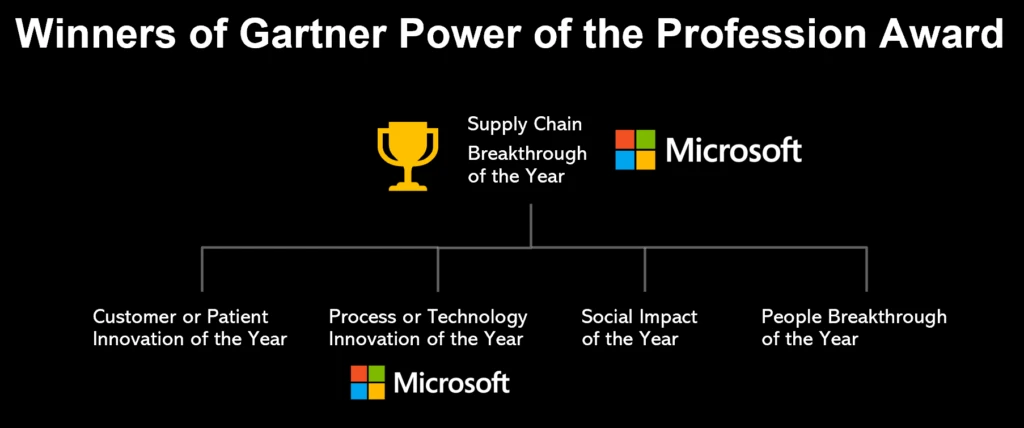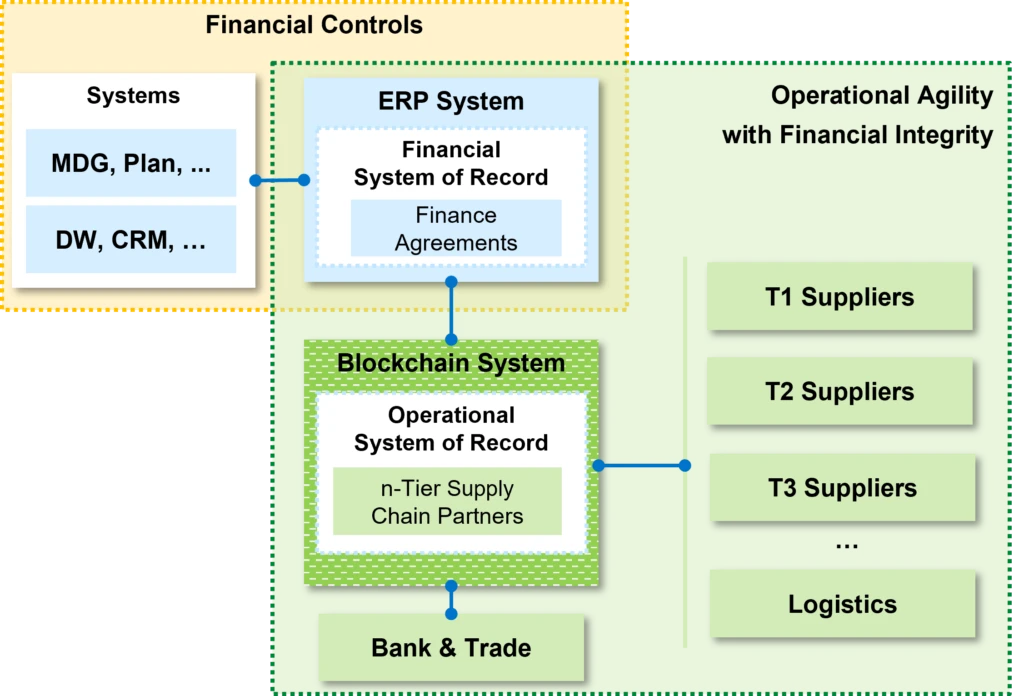
Microsoft’s Cloud Supply Chain blockchain initiative receives top award from Gartner for Supply Chain Breakthrough of the Year

Microsoft’s cloud supply chain is on a journey to digitize and financialize core inventory assets and achieve unique item traceability. To advance on this path, we’ve developed innovative blockchain solutions to drive down supply chain costs, increase visibility, and lay the foundation for mine-to-datacenter traceability.
We are announcing that Microsoft’s cloud supply chain received one of the highest recognitions in the supply chain industry by winning a Gartner® Power of the ProfessionTM Award.
According to Gartner, “this year’s award winners include a wide array of impressive initiatives benefiting communities and the environment, while also delivering bottom-line results for businesses, stakeholders and communities. Each initiative demonstrates significant investment and commitment to people, partnerships, and collaboration as critical enablers of supply chain strategy and business performance. The initiatives highlight the impact that’s possible when it’s necessary to quickly take decisive action in the face of significant health, social and environmental challenges.”
To us, the multi-party value chain pattern informs the future we envision for the entire high-tech industry and is a key aspect of our next phase.
Microsoft took home the overall top award for Supply Chain Breakthrough of the Year as well as the sub-category award for Process or Technology Innovation of the Year. These awards recognize the revolutionary progress the company’s blockchain technology usage has made in resolving deep supply chain challenges.

We’re honored to be included among so many great nominees and excited to share an update below of our journey and path forward.
First conceived in February 2018, the cloud supply chain blockchain program was launched into production in November 2020 with eight suppliers, and since then has been ramping up the volume of inventory and transactions in our commodities value chain.
We are in production with solid-state drive (SSD) and dynamic random access memory (DRAM) components and onboarding the rest of our high-value commodities supply chain over the next year and looking beyond to the value of involving other large industry buyers.
The approach using blockchain forms a key foundational element of our financial controls and compliance initiative in its next phase. It provides control and auditability of transactions across our complex n-tier supply chain with operational agility and financial integrity. Through this effort, we have designed a converged enterprise resource planning (ERP) and blockchain value proposition for our cloud supply chain that is informing a pattern of usage of n-tier transactional integrity alongside the sophisticated user experience of traditional ERP systems.
So what does blockchain have to do with traditional ERP systems?
Look across the supply chain industry, and you will see there are a set of requirements that to date have been loosely met by siloed systems of record such as Microsoft Dynamics 365 and SAP. The challenge has been getting the right data beyond one-up and one-down value chain relationships. The result has been stitched together siloed systems where nobody trusts the data and has stymied visibility, agility, and coordination across a supply base.
In an ideal business operations state, you’d like to have a sophisticated business application layer running atop an n-tier capable transaction layer that engenders trust in the data. This is where blockchains and ERPs converge into a larger value proposition.
Converged ERP and Blockchain Solution
Design principles
- ERP as Financial System of Record
- Blockchain: Available, Scalable, n-tier System of Record for transactions, Monitoring, Telemetry, Archiving
- Banking and trade role across n-tier
Components overview
- Blockchain Consortium
- Reporting in support of LSP as Agent
- Financial reconciliation
- ERP- Financial agreement, Contract
- Master Data, CRM, and data warehouse
- Planning- PR to PO conversion
- Supply Chain services integration
Blockchain as a Foundational Building Block
- Tokenized Inventory, Serialized Track, and Trace
- Provenance and Custody guarantees
- Tokenized Invoices and Purchase Orders
- Digitized transactions on financialized assets
- Sustainability data capture

We will have more to come on this converged ERP and blockchain architecture as we iterate through the next set of design sprints.
Looking forward, we will be bringing on more suppliers, verifying the ERP integration patterns, and launching the blockchain network into an open consortium with more members.
Moreover, we look forward to applying this technology to humanitarian issues, such as the use of conflict minerals, that plague the entire high-tech industry and tech-heavy fields like automotive. This is a concern for every part of our business at Microsoft, across our industry, and beyond. The platform will eventually enable traceability all the way from raw materials extraction at the mine to the datacenter and beyond to recycling, reuse, and disposition.
Learn more
For more on this technology, see Improve Supply Chain Resiliency, Traceability, and Predictability with Blockchain.
Follow Microsoft Manufacturing on social and visit our Microsoft Cloud for Manufacturing website to get the latest on how Microsoft and our partners are helping manufacturers create a more resilient and sustainable future.
Gartner does not endorse any vendor, product, or service depicted in its research publications, and does not advise technology users to select only those vendors with the highest ratings or other designation. Gartner research publications consist of the opinions of Gartner’s research organization and should not be construed as statements of fact. Gartner disclaims all warranties, expressed or implied, with respect to this research, including any warranties of merchantability or fitness for a particular purpose.




